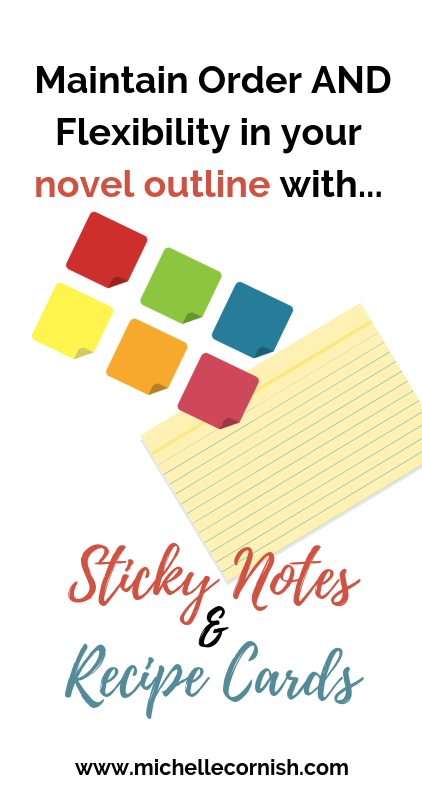12 Days of Planning a Novel: Maintaining Order AND Flexibility (Part 1)
/Just two days left to go in 12 Days of Planning a Novel. If you’re like me, you probably have tons of notes for your outline but you’re feeling a bit overwhelmed. As you’ve been working through this series, you’ve made a lot of additions and maybe some changes. Your tidy notes now have arrows and scribbles all over the place.
Don’t worry, these last two posts are going to show you how to organize your outline while maintaining the flexibility that’s often required when writing a novel. Part 1 will focus on the physical methods you can use to do this and in the next post, Part 2, I will discuss some digital ways to do this.
Before I go any further, if you’ve missed some of the series and you’d like to catch up, here’s where you can do that:
I love stationery products, so any chance I get to use colourful paper and markers, I’m going to take it. That’s why I love this novel outline idea from my author friend K. Kris Loomis who sadly passed away in 2021. Here’s a summary of how Kris uses sticky notes to outline her novels.
1. Identify the Main Sections (or Acts) of Your Novel
You can use a standard three act structure with Act II having two parts or Larry Brooks’s four-act structure that I mention in my post about story inspiration. Choose a colour to represent each act. These sticky notes will go on the top line of your sticky note wall. Go through your outline and identify where your plot shifts to a new act and write these plot points on the colour you’ve chosen to represent your acts.
These sticky notes should represent the main thing happening in your story in each of these acts. Thinking about what your protagonist is trying to do in each act can help.
2. Write Down Your Major Plot Points (Obligatory Scenes)
Now you’re going to note your major plot points. These are the required scenes you thought about when first starting to outline your novel. Choose a different colour for your major plot points, write each one on a sticky note, then post it under the appropriate act where these major plot points will take place. Make sure to leave some space between each major plot point because, in Step 3, we’ll be filling in the gaps with all the other scenes from your outline.
3. Incorporate Everything Else
Choose a third sticky note colour for all the story beats in your outline that aren’t a major plot point. This step might also help you come up with more things you need to include in your outline. As you start placing sticky notes on your wall, you may notice you missed a step when trying to get your character from point A to point B.
Some of the advantages sticky notes offer when organizing your novel outline is that they are easy to more around, you can add and remove scenes as necessary, and having the colour-coded notes on your wall is a great visual.
For more information about using sticky notes to outline a novel, read Kris’s full post here.
Another Option
If you don’t have a free wall to cover in sticky notes, try recipe cards. You can get colour-coded recipe cards or use white ones with coloured markers instead. Recipe cards are easy to spread out anywhere.
Something I’ve tried before is using one colour of recipe card and drawing a dot of colour in the top right hand corner so I know what the card represents. Just make sure you have a legend for all your colours and symbols so you know what’s what!
So there you have it—a couple of fun ways to organize your novel outline while still allowing plenty of flexibility for changes. In my next and final post in this series, I’ll share a couple of ways to digitally organize your outline.
All this talk about sticky notes and recipe cards has me wanting to run to the stationery store. I’d love to know if you love office supplies or if you’re more of a digital person? Let me know in the comments.





